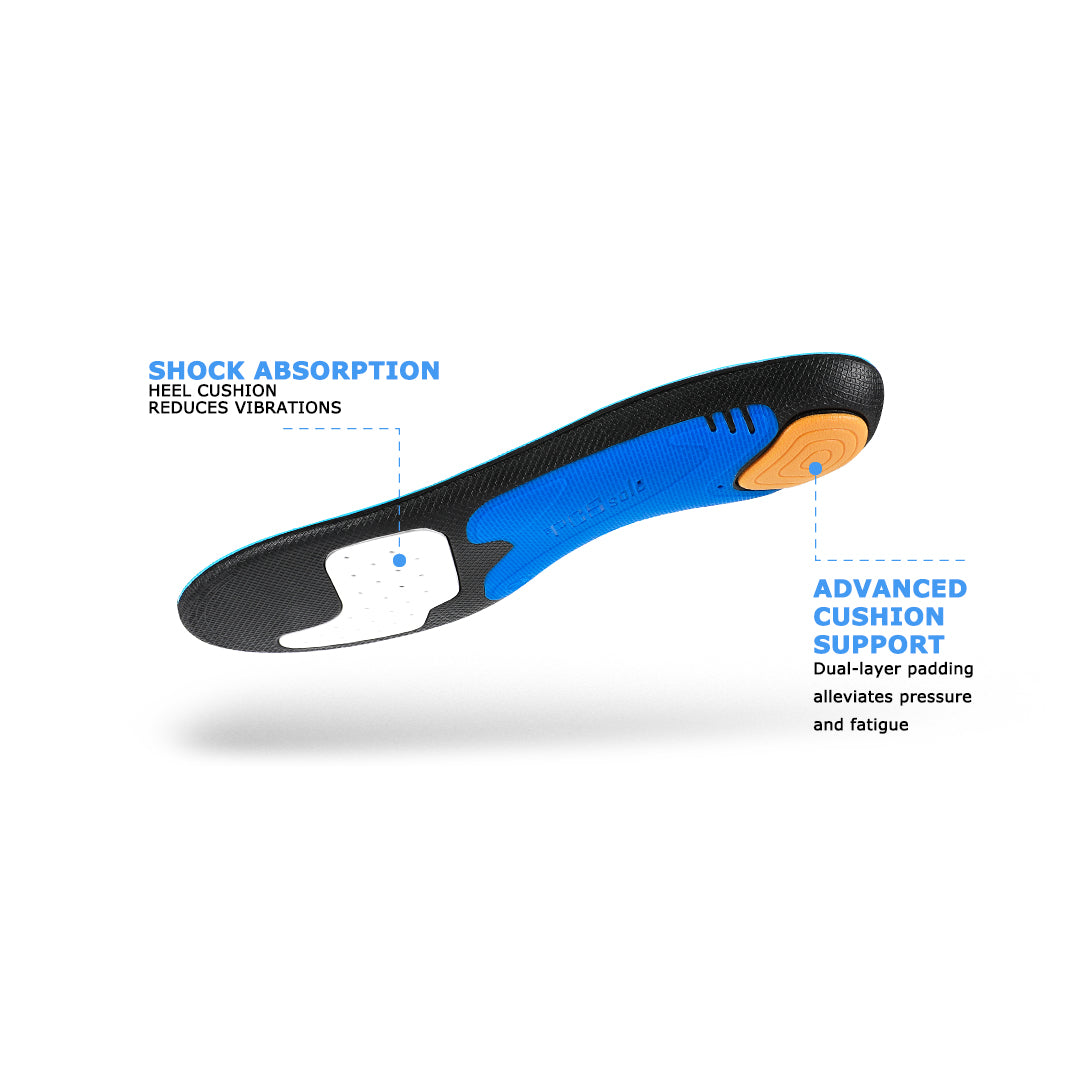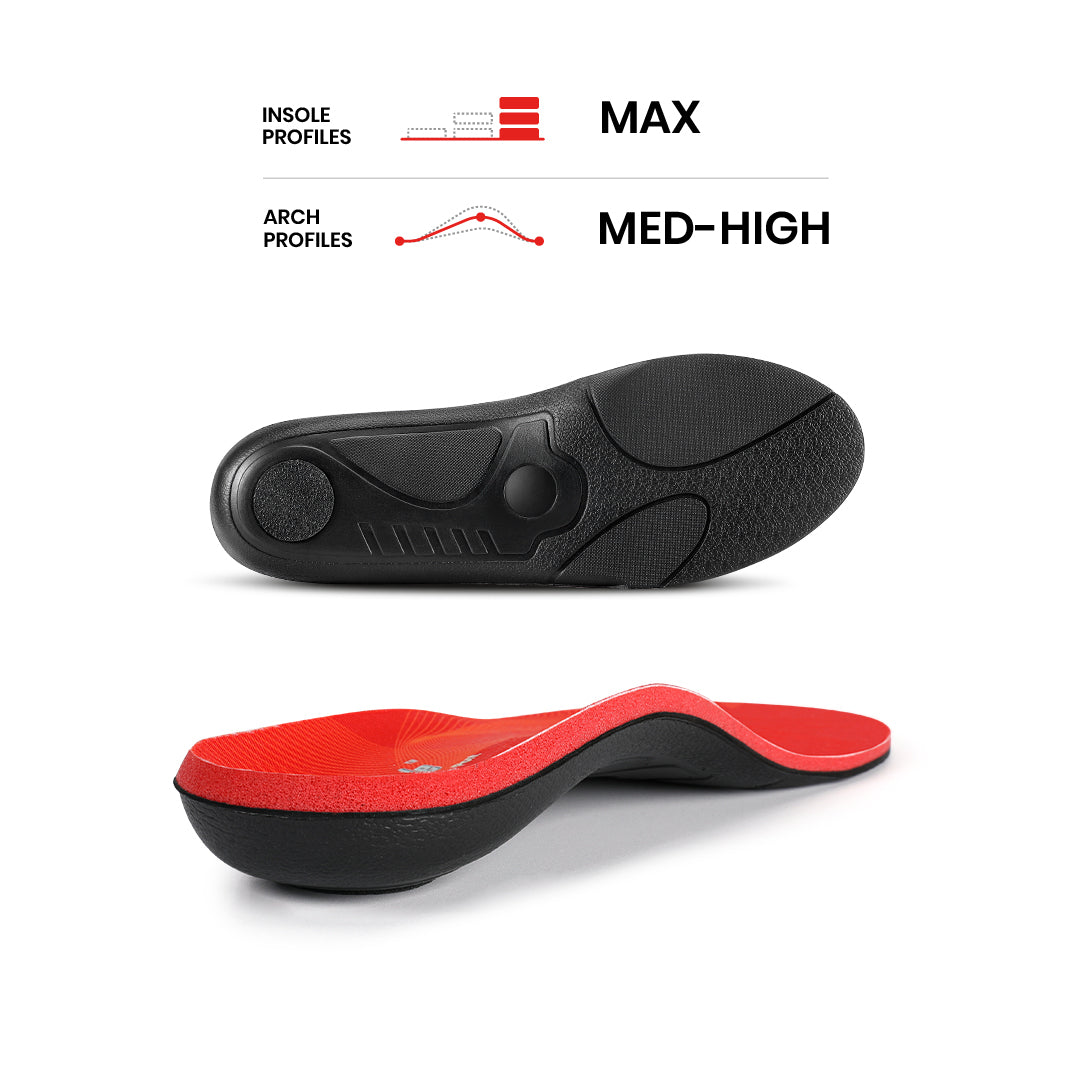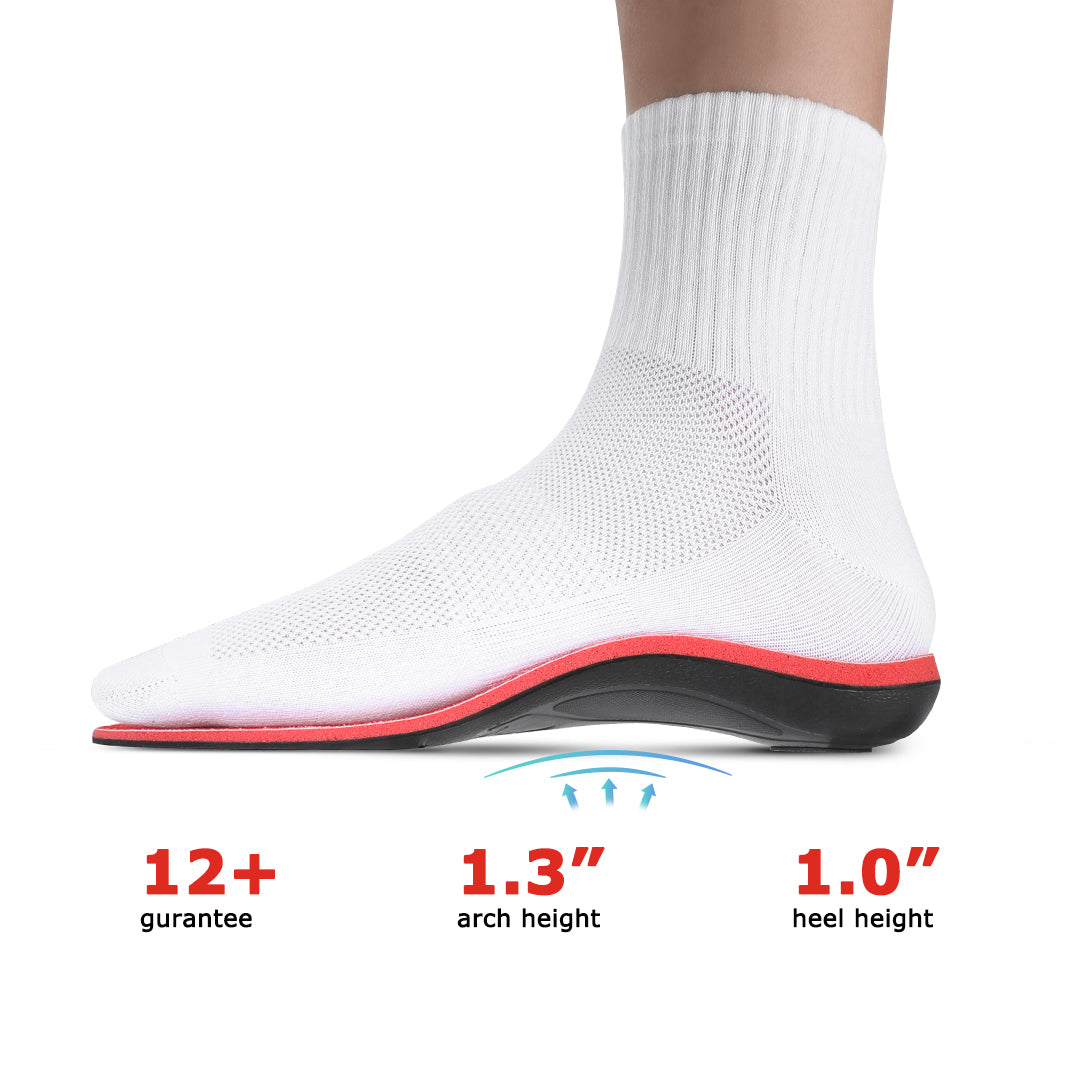
Table of contents
Christmas is just around the corner, and many people are starting to pick out gifts, but are you still worried about what to pick out? More and more people are paying attention to their health, and why is foot health so important? It's because your feet are connected to many parts of your body, and if you have problems with your feet, then many parts of your body will become unhealthy.
Foot health can be a reflection of your overall health. Why we recommend PCSsole insoles as the best gift for Christmas, you can give them to your loved ones, parents, relatives, friends, we think anyone needs a pair of insoles that can care for your foot health.
PCSsole insoles have become the first choice in many people's minds due to their unique design, comfort, and foot health benefits. This blog will give you more details on why PCSsole insoles are worth it. Do you care enough about your feet? Do you understand your foot health

What are PCSsole insoles?
PCSsole insoles are ergonomically designed to provide ultimate comfort specifically for the feet. These insoles provide unrivaled support and performance and redistribute pressure throughout the body (not just the feet). They can help everyone adjust and relieve pressure on joints, ligaments, and tendons. Wearing them, you will be shocked at the support they give your feet, ankles, knees, hips, back, and shoulders, bringing greater comfort and enjoyment to your life.
What does the PCSsole insole have to do with foot health?
Do you often feel pain in your feet, which is more intense after a long day of regular standing, or after a daily commute or outdoor exercise? Many people don't realize that there is a strong connection between insoles and foot health because insoles are in direct contact with and support our feet.

PCSsole insoles, unlike regular insoles, play an important role in improving comfort and preventing and relieving foot problems:
Do you know your arch type, if you don't know how to determine your arch type, this article will be a good help in determining your arch type. Check out: What's Your Types of Arches?
Support and Stability
Arch support: Designed with a semi-rigid arch structure that stabilizes and supports your foot, enhancing alignment and preventing discomfort.
PCSsole insoles provide the support your feet need, whether you have flat feet, high arches, or painful feet due to plantar fasciitis, etc. The support provided by these insoles helps maintain the natural shape of your feet, preventing arch collapse (as in the case of flat feet) or overpronation (as in the case of high-arched feet) and minimizing unwanted stress on your feet.
Flat feet: If the arch is too low or completely collapsed, the insole can provide additional support to help evenly distribute pressure and reduce strain on the soles of the feet and knees.
High-arched feet: For people with high arches, insoles provide proper cushioning to alleviate discomfort in the ball of the foot caused by hard surfaces.
Shock absorption and cushioning
Super comfort: Crafted with premium cushioning layers that adapt to your foot's shape, providing all-day comfort and reducing pressure points.
Shock absorption: Engineered with dual-density foam that absorbs impact with each step, protecting your feet from strain and reducing fatigue.
Forefoot anti-slip: Features targeted padding in the forefoot area, alleviating pressure on the metatarsal bones and reducing ball-of-foot pain.
Improve blood circulation and relieve swelling
Standing or walking for long periods of time can lead to poor blood circulation, which in turn can lead to swelling of the feet. Insoles can reduce swelling by improving the foot's support structure, helping the foot to maintain a natural posture, and promoting blood flow.
Elderly and pregnant women: For those who stand or sit for long periods of time, insoles provide extra support and can effectively improve blood circulation and reduce swelling and fatigue in the lower limbs.
Soothing and relieving foot pain
Many foot problems (such as plantar fasciitis, Achilles tendonitis, or bunions) can cause pain. Properly fitted insoles can alleviate these symptoms, relieve foot pain, and promote healing. pcssole memory foam insoles provide a soft, comfortable feel and alleviate pain caused by overuse or ill-fitting shoes.
Plantar Fasciitis: This is a common pain problem on the bottom of the foot. The arch support and cushioning of the insoles help to reduce pressure and pain on the bottom of the foot.
Achilles tendonitis: the cushioning pads of the insoles help to distribute the impact of the heel, reducing the pressure on the Achilles tendon and relieving pain.
Preventing Foot Diseases
Wearing proper insoles can not only relieve existing foot problems but also prevent some common foot diseases. For example, wearing ill-fitting shoes for a long period of time or neglecting foot health may lead to foot deformities or pain, and insoles can effectively reduce discomfort and prevent further damage.
Prevent blisters and abrasions: insoles can reduce friction between feet and shoes, preventing blisters and abrasions.
Reduces foot fatigue: suitable insoles reduce foot fatigue by reducing pressure on the feet, especially for people who stand or walk for long periods of time.
Breathability and comfort
PCSsole insoles' durable EVA foam base and multi-layer cushioning, non-slip, odor-resistant fabric keep your feet dry and fresh and also prevent foot infections or fungal problems (such as beriberi) caused by moisture buildup.
Improve Gait and Walking Posture
PCSsole insoles are designed to help correct poor gait or walking posture. It helps to adjust the angle of the foot when walking, improving the walking posture, making the foot land more naturally and effectively preventing injuries caused by poor walking styles. Particularly suitable for patients with flat feet or pronation to improve the stability of the stride and reduce the pressure on the knee joints and lower back.

What are the benefits of PCSsole insoles?
Do you have any of the following problems, if so, wearing PCSsole insoles these foot problems will be well relieved, which ordinary insoles and shoes without supportive features can not do.
Flat feet: Flat feet are a condition where the arch of the foot is missing or collapsed, resulting in the entire sole coming into contact with the ground. People with flat feet do not have pronounced arches when standing, which may be congenital or acquired, or may affect one or both feet. All infants have flat feet and the arches form in early childhood. Flat feet are a common foot problem, especially among adults, and about half of the population may experience some degree of flat feet.
High arches: High arches refer to a higher-than-normal arch in the foot, usually characterized by an overly curved or “too high” arch. A normal arch is one that has some flexion but is still able to bear the weight of the body and provide comfortable support. A high arch means that there is no proper distribution of pressure on the arch of the foot, resulting in a concentration of pressure on the front and heel of the foot.
Plantar fasciitis: Plantar fasciitis refers to inflammation of the plantar fascia due to overuse, injury, or stretching. The plantar fascia is located on the bottom of the foot and connects the heel to the foot. The plantar fascia is located on the bottom of the foot and connects the heel to the toes. When the area is repeatedly squeezed, stretched, or rubbed, the fascia may tear slightly, causing an inflammatory reaction, resulting in pain in the foot. When the area is repeatedly squeezed, stretched, or rubbed, the fascia may tear slightly, causing an inflammatory reaction, resulting in pain in the heel or the entire bottom of the foot.
Morton's Neuroma: Morton's neuroma is a common nerve disorder of the foot that usually occurs between the toes, especially between the third and fourth toes. It is caused by compression or irritation of the nerves in the foot, resulting in a thickening of the tissue around the nerves and the formation of a nerve mass. Although called a “neuroma,” it is not actually a tumor, but rather a growth or thickening of the nerve.
Metatarsalgia: Metatarsalgia is a common form of foot pain that usually refers to pain in the front of the foot, particularly in the metatarsal region. The metatarsals are the long bones that connect the toes to the heel and are responsible for carrying most of the weight in the gait. Metatarsalgia usually manifests as pain and discomfort in the front part of the foot, especially underneath the toes, often accompanied by a tingling, burning sensation, or pressure.
Pronation: Pronation refers to the inward rolling movement of the foot during gait. When walking or running, the inside of the foot contacts the ground more, which may cause the knee to buckle inward and the inside of the sole to wear faster, especially the inside of the shoe.
Supination: Supination refers to the phenomenon that the foot rolls outward excessively during gait, and the outside of the foot is worn. Especially when running, patients with high arches are prone to external rotation, causing ankle and knee problems.
Do you need PCSsole insoles?
First of all, you need to check if you have any of the arch problems mentioned above, if so then PCSsole insoles are the best choice for you. If you are not sure how to choose the right insoles for you, you can use the Insole Finder to help you.
If you don't have any of the arch problems mentioned above, you can also choose a pair of insoles based on your needs, which can help you prevent a range of conditions caused by foot pain in advance.

How much should I spend on insoles?
Insoles are further divided into customized orthotic insoles and over-the-counter insoles, do you know the difference between them?
Custom Orthotic Insoles: Custom insoles are designed to fit the unique shape and needs of each individual's foot, and are usually tailored by a professional podiatrist or orthopedic specialist to effectively support the arch, correct gait, and alleviate foot-induced pain problems such as flat feet and plantar fasciitis.
However, one of the drawbacks of customized orthotic insoles is that they are very expensive, often costing hundreds of dollars or more. Another is the time required for customized orthotic insoles, which starts with a consultation with a healthcare professional who will measure your feet and make a mold of your feet, a process that will take a few weeks before you receive the final product.
Over-the-counter insoles: These insoles are a more affordable and accessible foot support option that is readily available at drugstores, shoe stores, and online retailers.OTC insoles provide cushioning shock absorption and arch support for greater comfort for your feet. Additionally, OTC insoles come in a variety of sizes and styles, allowing you to find the right fit without customization. These insoles can be purchased for just a few dollars, making them an affordable and great option for improving and relieving your foot problems.
Choose the right customized orthotic insoles or OTC insoles for your needs, or you can seek the advice of a podiatrist or orthopedic specialist who can assess the condition of your feet and recommend the most appropriate option.
PCSsole insoles customer reviews and testimonials

PCSsole Brand Quality Assurance
We offer a risk-free purchase and promise service, and we stand behind our products with a satisfaction guarantee, so you can try our insoles risk-free and experience the comfort and support they offer.
Users are advised to wear the orthotic insoles gradually over a period of three to seven days, and you will feel a reduction in pain the first time you wear these supportive insoles.


























Share:
Plantar Fasciitis: Like Walking on Sharp Rocks
How do I Fix Flat Feet? Arch Support Insoles for Flat Feet